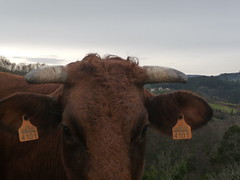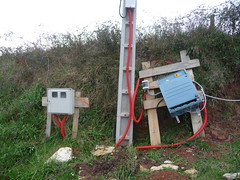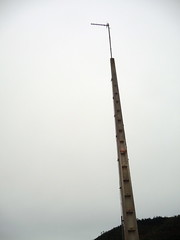Everyday Computing in Rural Context
Posted: February 3rd, 2009 | No Comments »Martin Dodge‘s latest talk on “A New Countryside Code? Software, Surveillance, Simulation of Rural Spaces“, takes us away from the socio-technological considerations of pervasive computing in urban environments to make observations of his concept of code/space in the rural context, looking at “What difference does code make in the countryside, particularly in farming practices and rural landscape“. Beyond the ‘techno-hype’ the pieces about distributed sensor nets on farms and bio-instrumentation of livestock, the contemporary country has rarely been observed through social-technical lenses. Contradicting the general assumptions that oppose the rural with the urban and the modern, farm spaces are highly surveilled and governed (e.g. to track bird flu outbreaks). The integration of software in the countryside makes farming knowable, abstracting animals and changing practices with a stock person becoming a screen-worker. The ability to code livestock and the agricultural land creates new types of surveillance with “the data needed to drive them can be obtained without any knowledge of those to whom the data pertain” and new opportunities to simulate risks. This evolution raises questions on the dependency of farms on software and the effectiveness of their promises:
But how far are some farm spaces now code/space? are coming to depend on software and distributed information systems to function?
What is the effectiveness of real-time surveillance and potency of future predicting software simulations for managing rural landscapes?
Walking through the contemporary Spanish rural code/space over the weekend, capturing what Martin Dodge would describe “green and pleasant landscape mixing with the obvious technological infrastructures and grey concrete”
Relation to my thesis: Healthy exercise to observe the socio-technical implication of pervasive computing outside of the city, comparing, rather than opposing with other environments, the rural context with its need of surveillance, governance and predictions, with digital data and software that change the practices and expectations. Juan Freire researcher in marin biology also performed this kind of exercise that draws comparisons between the ocean and the city and their digital skins (see his presentation at Visualizar: Visualizing Urban Spaces’ Digital Skin. How? Why?)




